Genetics & Plant Breeding Department





Main objective: Development of genetically improved clones for the industry
Priority area: To Ensure the availability of raw materials necessary for the rubber industry by encouraging the development of cultivation of small and medium-scale rubber estate owners.
This objective is supported by,
- Production of new clones with high yield and vigour.
- Expansion of the genetic diversity of the existing Hevea breeding pool.
- Incorporate more genes into the existing breeding pool from non-Wickham germplasm materials and foreign clones for biotic/abiotic stresses.
- Develop clones to expand rubber in marginal areas towards the climate-smart rubber cultivation.
- Develop strong early selection parameters to strengthen and reduce the period of breeding cycle (both molecular and conventional).

Acting Head / Principal Research Officer
K K Liyanage, BSc Agric (SL) MPhil (SL), PhD (China)
kapilal@rrisl.gov.lk; lkapila@ymail.com ; kapilakliyanage@gmail.com
Obtained his PhD from Kunming Institute of Botany, Kunming, China, affiliated with Mae Fah Luang University, Thailand. Obtained his M. Phil in Agricultural Biology from the Post Graduate Institute of Agriculture, University of Peradeniya, and the BSc in Agriculture from the University of Peradeniya, Sri Lanka. He has published more than thirty research papers in international and national journals, bulletins and conference proceedings.
Currently he is involved in research on the development of improved genetic materials, conservation of germplasm collection, and selection of superior genotypes and clone identification based on morphological and molecular characters.
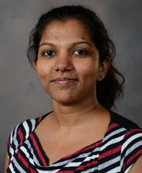
Senior Research Officer
Nelomie N Galagedara, BSc Plant Biotechnology (SL), MSc (USA), PhD (USA)
nelomie_1988@yahoo.com ; nelomienayanathara@gmail.com
Obtained her PhD at Louisiana State University, Baton Rouge, Louisiana, USA, MSc in Plant Pathology at North Dakota State University, Fargo, ND, USA and BSc in Biology specializing in Plant Biotechnology from the University of Colombo, Sri Lanka. She has several publications in theoretical and applied genetics and several other international conference proceedings.
Currently, she is involved in research on the selection of superior genotypes and clone identification based on morphological and molecular characters.
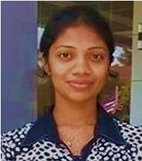
Research Officer
Thanuja D Waduge, BSc Agric (SL)
thanujawadu@gmail.com
Obtained her Bachelor’s degree in the Faculty of Agriculture and Plantation Management at Wayamba University of Sri Lanka. Currently, pursuing a Master's degree in Crop Protection and Plant Biotechnology at the University of Kelaniya.
Focused on the development of novel genotypes to the Hevea breeding pool with the use of conventional and molecular breeding strategies including characterization of Hevea germplasm collection, evaluating the hand pollination progenies at nursery level, small-scale clonal trials, estate collaborative trials, and smallholder collaborative trials.
- Dr. K.K. Liyanage was awarded the best presenter in the Crop Characterization and Diversity session at the twenty-fourth Annual Congress of the Post Graduate Institute of Agriculture, University of Peradeniya. November 15 – 16, 2012.
- Dr. S.P. Withnage won the Silver Medal for her presentation on Gibberellin (GA); The Kenaf Fiber Quality Enhancer. Bio Malaysia. Kuala Lumpur: MOSTI. 17-19 November 2009
- Dr S.P. Withnage won the gold medal for her research presentation on “Overexpression of gibberellin 20 oxiclane gene increase of cellulose fiber length Kenaf (Hibiscus cannabinus L.)”, Exhibition of Invention, Research and innovation Serdang: University Putra Malaysia. (July 28-30, 2009)
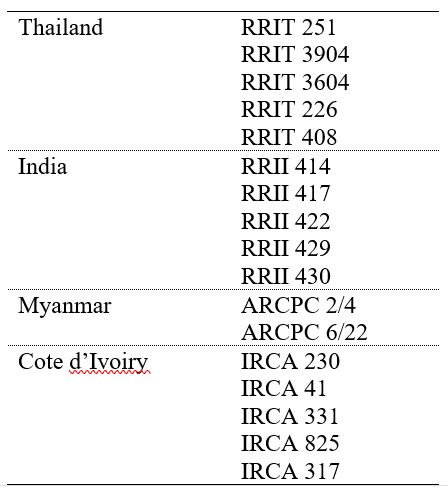
Successful story of genetic improvements of Hevea breeding pool in Sri Lanka
The Genetics and Plant Breeding Department is the pioneer in Hevea breeding and a remarkable contribution has been made to the industry by improving the genetic material of the plants. We have developed plenty of new high-yielding clones, and presently the genetic potential of rubber yield has reached around 3,000 - 3,500 kg ha-1 yr-1
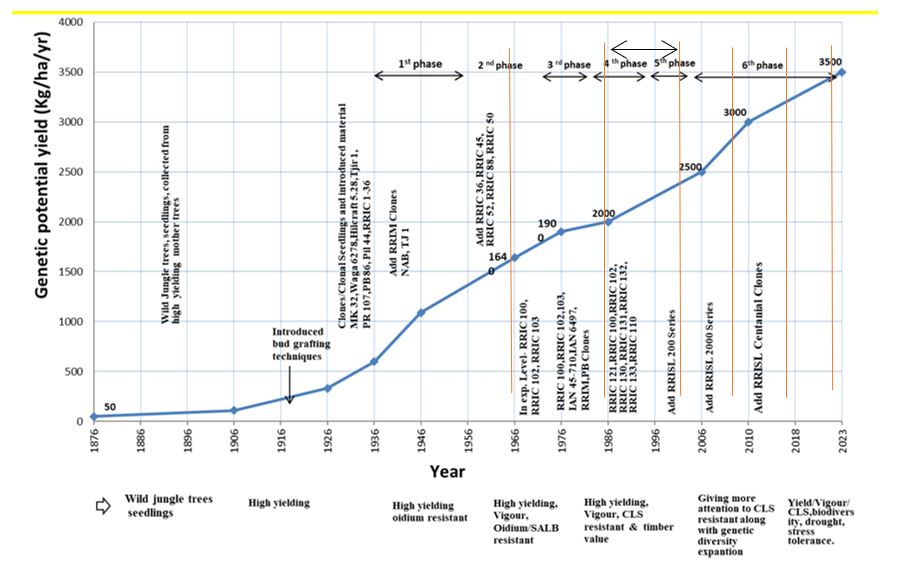
RRISL signed several bi and multi-lateral clone exchanges over the past century. There is evidence, even in the current clone recommendation, that it has 10 foreign clones from India, Malaysia, and Indonesia. In 2015, a Memorandum of Understanding (MoU) was signed by fifteen rubber-growing countries to exchange 49 rubber clones between them to promote international cooperation and capacity building in the IRRDB member countries for the betterment of the natural rubber industry and evaluate the performance of all the exchange clones in the different agro-climatic conditions in the member countries.
Introduced five unregistered clones and two Indian clones as interim clones to the revised clone recommendation to supply new clones to the industry quickly to encourage the planters to grow a wide variety of clones to maintain good genetic diversity in plantations. They are recommended to be planted up to two hectares in a plantation in Estate/RRI collaborative clone trials.
According to the Quantitative gene expression analysis of selected genes to screen drought tolerance of selected Hevea clones, six promising clones were identified for marginal areas. Here, valuate the level of drought-responsible genes Catalase (CAT), ascorbate peroxidase (APX), and Glutathione peroxidase (GPX) expression of selected Hevea clones under drought stress conditions. Further research is continued to confirm the results.
Analysis of antioxidant gene expression in tapping panel dryness was done. The preliminary results of analysis of antioxidant gene expression in tapping panel dryness (TPD) affected rubber trees showed that the HbMnSOD and HbCAT genes were down-regulated in TPD-affected rubber clones and might have led to the accumulation of Reactive Oxygen Species (ROS), which may cause TPD.
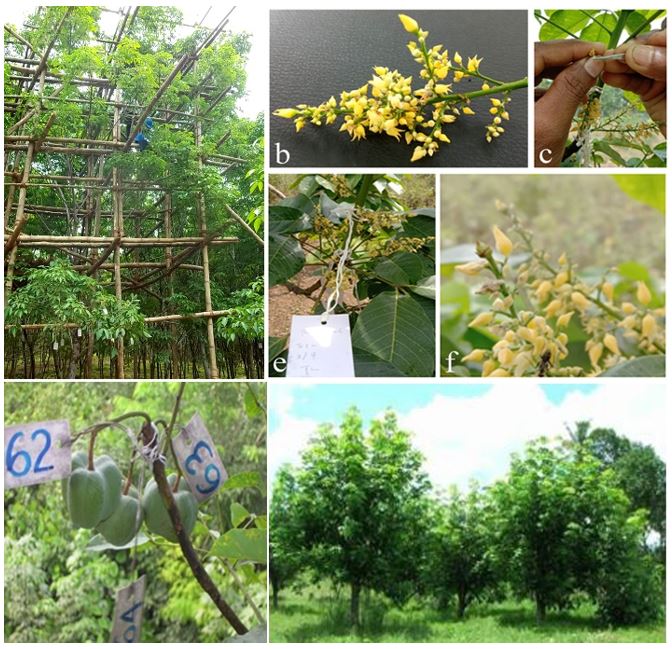
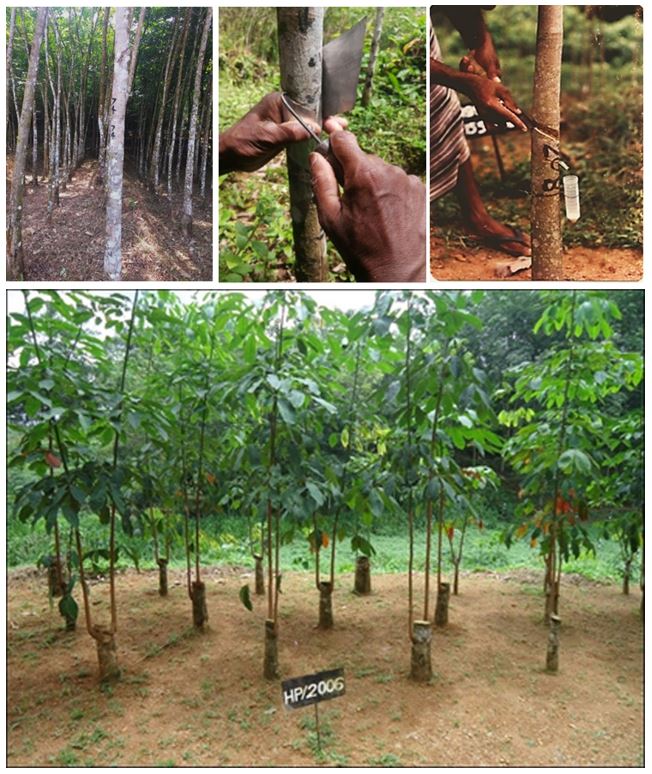
..JPG)
%20.JPG)
..JPG)
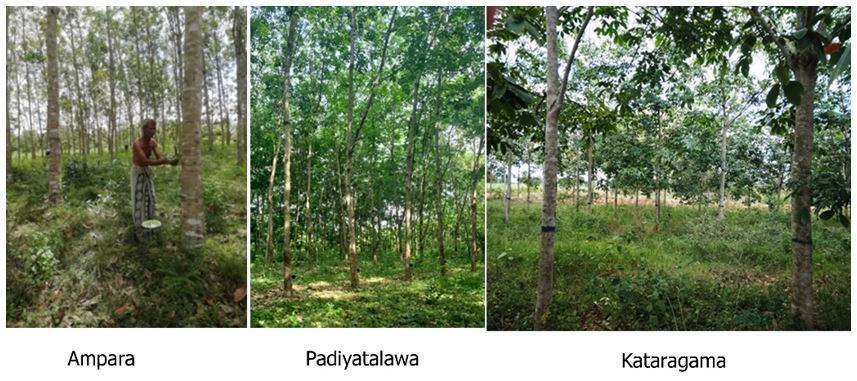
SCI JOURNALS
- Liyanage KK, Khan S, Herath V, Brooks S, Mortimer PE, Nadir S, Hyde KD, Xu J, (2020), Genome-Wide Identification of the MLO Gene Family Associated with Powdery Mildew Resistance in Rubber Trees (Hevea brasiliensis), Tropical Plant Biology, https://doi.org/10.1007/s12042-020-09262-3.
- Jayawardena RS, Hyde KD, Chen YJ, Papp V, Palla B, Papp D, Bhunjun CS, Hurdeal VG, Senwanna C, Manawasinghe IS, Harischandra DL, Gautam AK, Avasthi S, Chuankid B, Goonasekara ID, Hongsanan S, Zeng XY, Liyanage KK, Liu N, Karunarathna A, Hapuarachchi KK, Luangharn T, Raspé O, Brahmanage R, Doilom M, Lee HB, Mei L, Jeewon R, Huanraluek N, Chaiwan N, Stadler M, Wang Y (2020), One stop shop IV: taxonomic update with molecular phylogeny for important phytopathogenic genera: 76– 100. Fungal Diversity. 103:87-218. https://doi.org/10.1007/s13225-020-00460-8.
Journal Papers
- COMPREHENSIVE OVERVIEW OF THE CLONE RRISL 2006 (2023). KK Liyanage, TTD Dahanayake, NPSN Karunaratne, KVVS Kudaligama, NS Jayasinghe, NN Abeywardana. Rubber Science, 36, 79-87
Book Chapters
- Liyanage K.K., (2021), Clone identification, In: Rodrigo, V.H.L, Seneviratne P. (Eds.) A Hand Book of Rubber, Agronomy, Vol. 1. (pp. 253–269). Rubber Research Institute of Sri Lanka.
Bulletin Papers
- TTD Dahanayake, KK Liyanage, B Baddewithana, NS Jayasinghe, (2022). Details on the development of the clone RRISL 2000 (1976 HP-8). Bulletin of the Rubber Research Institute of Sri Lanka 59, 1-14.
- TTD Dahanayake, KK Liyanage, B Baddewithana, NS Jayasinghe, (2022). The hybridization procedure for the development of Hevea clones. Bulletin of the Rubber Research Institute of Sri Lanka 59, 15-29.
- KK Liyanage, TTD Dahanayake, B Baddewithana, (2021). A comprehensive overview of the clone RRIC 102, Bulletin of the Rubber Research Institute of Sri Lanka 58, 16-21.



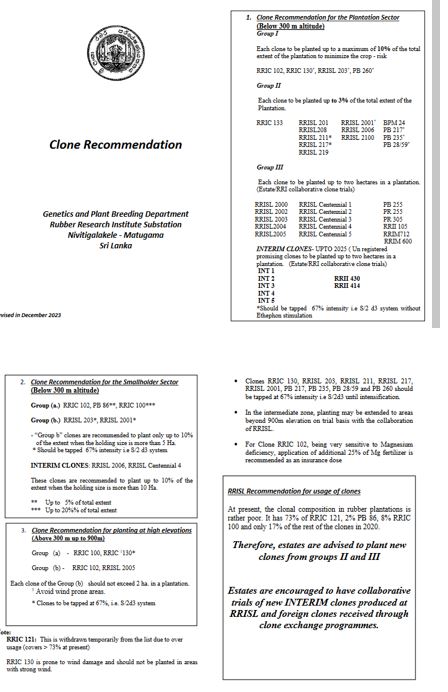



 Call 1919
Call 1919